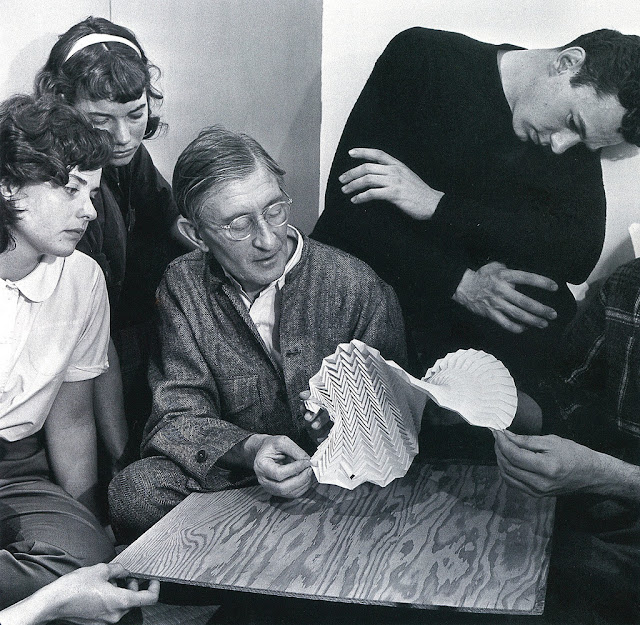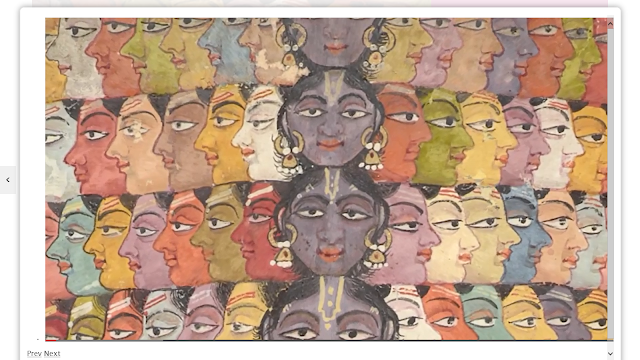ETHICS, AESTHETICS AND INNOVATION
A Speech by Frei Otto
There are five to ten million architects allover the world, and they speak over a hundred languages. Five to ten thousand of them have come together in Berlin (XXI World Architecture Congress from 22 to 26 July 2002) to try to find common ground. They come from all continents, cultures, religions and societies. And they are able not only to communicate, but also to understand one another not so much through the spoken word, but through their shared conception of their work. They all have the same ethic, regardless of the colour of their skins and regardless of where they live, how they vote or how they worship. They speak with their actions: with their ideas, designs, and buildings. Doctors have their Hippocratic oath. Architects live within their own world of ethics. Architects help people to live on earth, to create houses and residences. They practise brotherly love even towards people whom they do not know. They fight for peace with the means at their disposal. They do not harm others: neither in peace nor in war, neither with their hands, weapons. works or thoughts. They respect the works of others and work to preserve extraordinary examples of architecture. When they build. they are careful in their use of human strength, energy, and materials, and they strive to build in harmony with nature and to preserve nature as the basis of all life. This means that architects must be able to say no when they are asked to perform a service which they cannot support, because their work can cause harm to human beings in body and spirit, and can even kill. Saying no at the right moment and in the right place is necessary whenever a building project is harmful to nature and the environment. By saying no, we can prevent harm, though we cannot create something new. The architect's service to human beings and to art begins with his acceptance of the builder'S ethics and of his responsibility to future generations. The latter begins with the development of solutions for previously insoluble problems. Architects take action when they see that something is wrong -not only to avert or contain danger, but also when people have no place to sleep or when the need arises to conceive of a more beautiful living world. Architects must make it possible for the useful and the beautiful to be created together. It is said that there are five to ten million architects in the world a seemingly large number. However, when one considers the vast amount of work that needs to be done, the number does not seem too large. Architects have been around for at least ten thousand years. In essence, their tasks are still the same, but they are much more complex than they used to be. Today, the task of the architect is not simply to provide shelter from the forces of nature, but to create conditions which allow people to live in harmony with nature and at peace with one another. Human beings are not peaceful by nature. As in many animals, inhibitions against killing are usually effective only against members of the same community who are physically present. Often people may kill someone for the simple reason that the other person is dressed differently. And whole cities and countries are sometimes destroyed together with all their inhabitants, no matter how solidly their houses are built, for no better reason than that the people there speak a different language and pray to a different god, and that their houses look strange. Whether it will be possible in future to contribute to world peace by means of good residential and urban planning is something we can only hope. However, this hope is by no means a vain one, even if we still have a long way to go. For most architects, their professional ethics is something they take for granted. It is the time-honoured, traditional attitude of every builder in the world. It is the basis of today's building practices and has its roots in most people's longing for security, peace, and well-being. If we ever succeed in drafting a code of global ethics which everyone in the world can identify with, we could do far worse than take the architects' code of professional ethics as a model. Such a global code could read: .. Human beings shall preserve their planet, the source of all life. They shall preserve themselves and all their fellows from damage to body, spirit, and property, and they shall help one another in need." Even if architects, urban planners, and engineers recognise a shared code of professional ethics. this does not mean that they are all above reproach. The Union internationale des architectes is not a haven of the just and unblameable. However, its perceived duty is to ensure that architects, in addition to producing buildings that give shelter and solving technical problems with technical means, are prepared to go the extra mile and produce beautiful structures that give their owners a sense of being at home. However, there are still architects who fail to fulfil this mission. We talk so much about humanity, brotherly love and the preservation of resources -but what do we see happening every day? All over the world there is a consensus of good intentions, but putting these intentions into practice is frequently fraught with disharmony. Builders sometimes become not the representatives of professional ethics, but fighters for influence and vested interests. And heated words are exchanged in arguments about trivial matters of conventional aesthetics. Suddenly, the focus is more on one's own survival than on the lives of one's fellow human beings, and little respect is paid to competitors and their works. And structures come into being which imperceptibly undermine the architect's ethos. Over the years, a new type of high-performance star architect has come into being. These people can do everything except say no; they will build everything the powerful and influential ask for; they employ hundreds of young architects, but ask them to deny their own abilities. The powerful divide up among themselves a world which really belongs to everyone; they occupy it and sell it to become more powerful still. They commission anonymous, soulless houses of which we already have far too many in too many places around the world. Ethics and aesthetics have always been regarded as cultural values which belong to all people and all societies. Ethics is based on broad consensus. In contrast, aesthetics is defined by a minority. Aesthetics is regarded as the study, and sometimes the science, of the beautiful, and it is based on those perceptions which go beyond the functional to the special and which encompass non-functional, sensory details which are difficult to explain in words. Ethics is the basis of the survival of the human race; aesthetics is a matter of education. There are no rules or schools for aesthetics. The capacity for aesthetic perception, like the more advanced ability to produce aesthetic creations, seems to be determined rather imprecisely and sporadically in the genetic code. Perceptions can vary endlessly, and they can function as a survival mechanism. Not all perceptions, however, are biologically functional. The perceptual ability of human beings goes far beyond the functional and enters the unlimited world of sensory perception. Among the billions of perceptions experienced by every individual, those related to beautiful and pleasant things occupy a special place which is usually independent of considerations of good and evil or profit and usefulness. The success of an architect's work and the manifestation of aesthetics in his work is dependent not only of the intensity with which he expresses his artistic and sensory perceptions in his work, but also on the observer of the finished building. Like other artists, architects experience their works in a special way and with all their senses, but they do so in a completely different way from an independent observer. Architects are biased; they see weaknesses and strengths which go unnoticed by others, and thus they stand apart from the social trends of their time. Something that is beautiful is not necessarily ethical too. Beauty is not equal to goodness. Beauty can be cruel, and ugliness can be good. And sometimes the beautiful grows ugly over time, while the ugly grows beautiful. In art, beauty is always original and new; it is an invention and an innovation. A work becomes a work of art through a wealth of inventiveness. Technical innovations are based on a principle of constant improvement. This is necessary in the building industry in order to ward off the hostile forces of nature. Innovation is inextricably linked to architecture and is of worldwide significance. It lies at the core of the global aspect of every building. Unlike technical innovation, aesthetic innovation is timeless and independent of fashions, movements, transient aesthetics and functions. The criteria and the creation processes of aesthetic innovation differ fundamentally from those of its technical counterpart, even if, in architecture, the two are often inextricably linked. Technical innovations represent a sequence of developments that point to the future; aesthetic innovations do not supersede one another, and so they remain history. At the heart of the debate about aesthetics in modern architecture lies the city and its constituent elements, the buildings. The definition of a beautiful house that is taught in schools and published in the press is subject to constant change. And it does not result in unsurpassable and timeless houses, nor even in artistic architecture. It is possible to produce any number of uniquely beautiful houses -strictly speaking, every house can be uniquely beautiful. I believe that we do not need a doctrine of beauty in today's architecture. However, what we do need is unequivocal dedication to the ethos of the builder; without this dedication, a house may be beautiful, but will never be humane. In order to attain aesthetic solutions, we must go in search of them. In the process, it makes no sense to separate the work of engineers and architects. Together, these two occupations form a large professional group which, in a very real sense, helps people not only to live on earth, but also to find fulfilment. The ability to create something aesthetic is dependent not on profession, but on motivation and talent. When architects and engineers work together to achieve a common goal, their efforts are more likely to result in a work of architectural art than when each group works alone. Aesthetic innovations are a pre-requisite in all the arts, and they can be extended into infinity. Art knows no limits. Just as a painter can find an endless variety of subjects for pictures, just as a sculptor can fashion innumerable different shapes from his material, so an architect, too, can find an infinite number of solutions for the task of creating a building. The vast variety of possible forms is a prerequisite for architecture as an art. This is why architects resist regulations and institutions which try to dictate the appearance of houses and the skills which an architect must have. From a physical perspective, variety of form is not necessarily bought at the price of higher expenditure of materials and energy. Architectural art need not be expensive -but its value is always high. And frequently it is those buildings that were created at low technical and financial cost which acquire the unique beauty of something original. Architects may be service providers, but they can indulge in unlimited freedom when it comes to aesthetic innovation. In particular, they should not bow to external dictates in the task of making aesthetics perceptible to the senses. The work of many great architects was rooted in the knowledge that one should not allow prevailing doctrines of beauty to confine one's thoughts and actions. Thus architects who produced true art were always essentially self-taught pioneers of the next cultural era in any epoch. And this still applies today. The aesthetics of architecture can only refer to existing buildings -to the innovations of yesterday, not to those of today, and least of all to those that will come in the future. True innovations in art have never had a place in aesthetics. They have no lobby in the temples of art because they cannot be recognised: At the most, they can be foreseen. They cannot be evaluated according to the principles of an aesthetic code. And they are recognised only gradually and due to their long-term impact. Only the inventor, who can know and critically examine the process by which the invention was created, knows how the unique and the special came into being.
related posts:
Hiawatha's Sailing
The Birch Bark Canoe
Life Like Water: Steve Jobs, Design, and the Nature of Nature
Corrected transcription of a recording of a free speech held on July 25. 2002 at the XXI World Architecture Congress in Berlin. Hiawatha's Sailing
The Birch Bark Canoe
Life Like Water: Steve Jobs, Design, and the Nature of Nature
.jpg)









Comments
Post a Comment